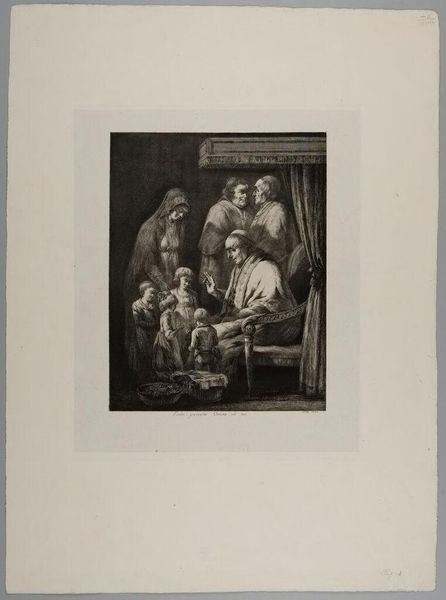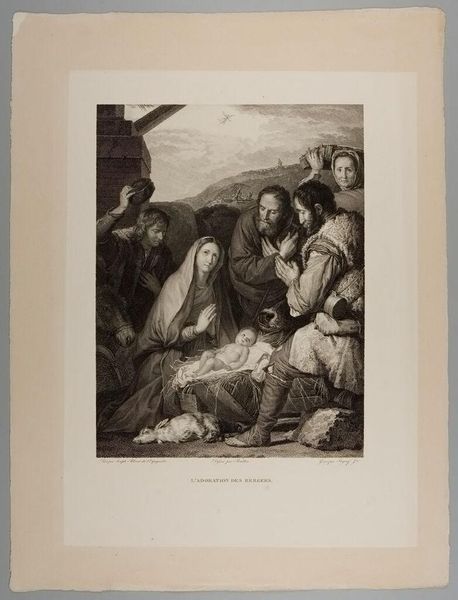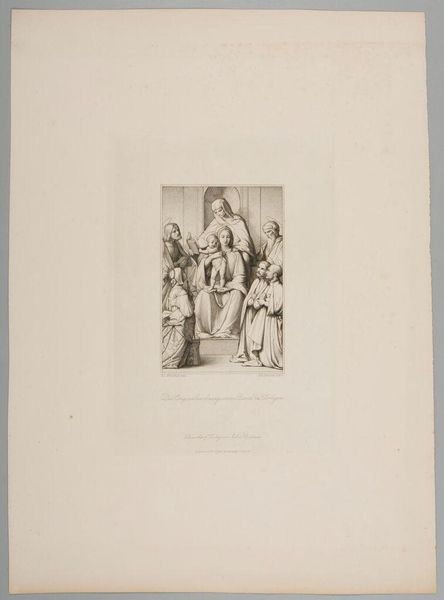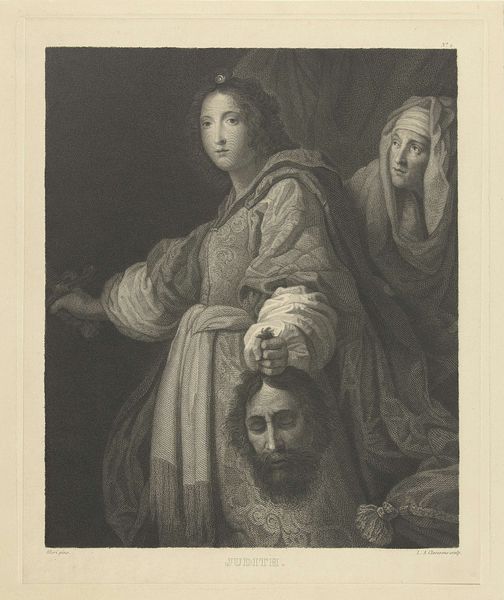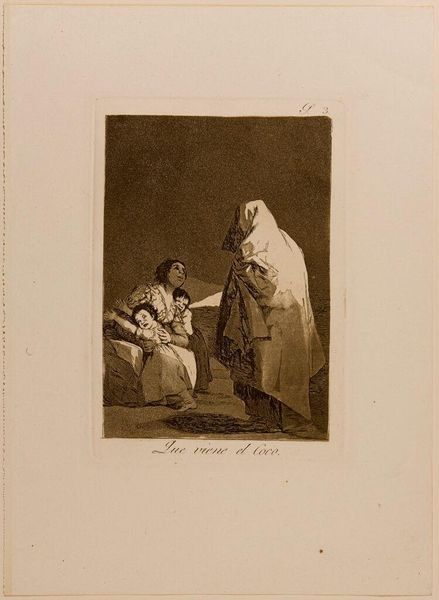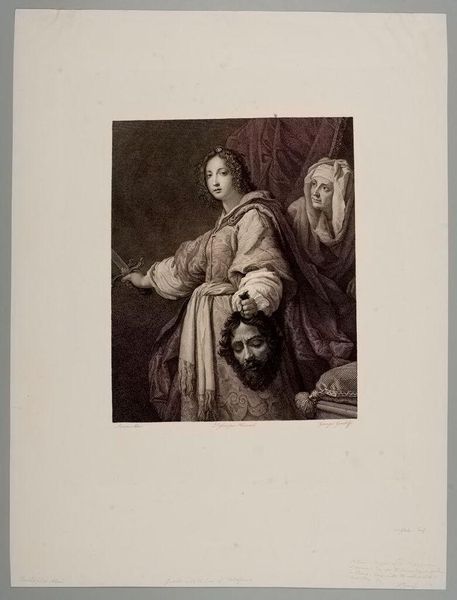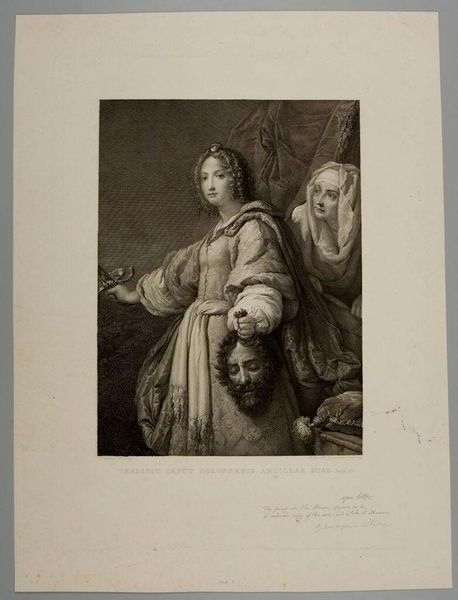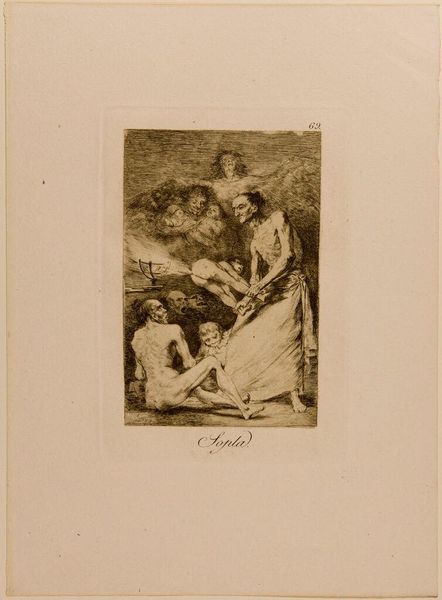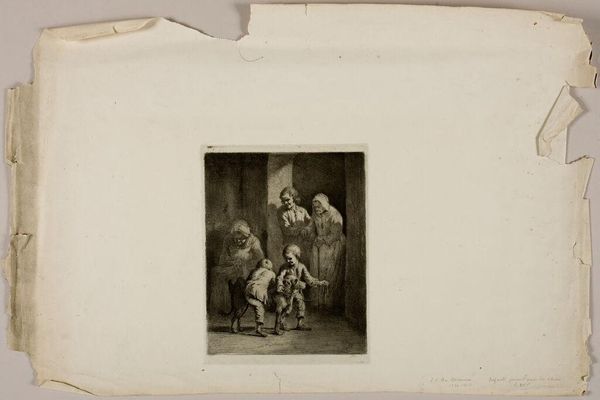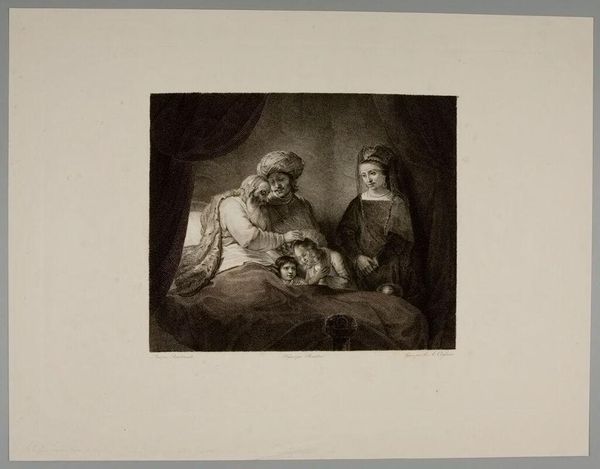
Judith with the Head of Holofernes 18th-19th century
0:00
0:00
Copyright: CC0 1.0
Editor: This is Lambert Antoine Claessens' "Judith with the Head of Holofernes" at the Harvard Art Museums. There's a stillness despite the gruesome scene. What symbols do you see at play here? Curator: The head is a potent symbol, not just of death but of violated power. The sword, barely visible, represents both Judith's courage and the divine instrument of justice. Notice the veiled figure behind her – a cultural memory of the maidservant, complicit, yet fearful. Editor: So, it is about more than just the act itself, but the history? Curator: Precisely. Judith's story resonates because it represents the oppressed rising against tyranny. Consider, also, how later interpretations may differ from the original religious intent. What stays constant? Editor: The image of female strength, perhaps, even when delivered through violence. Thanks, I'll consider that. Curator: Indeed. The symbolic language of art evolves, echoing through our collective consciousness.
Comments
No comments
Be the first to comment and join the conversation on the ultimate creative platform.
